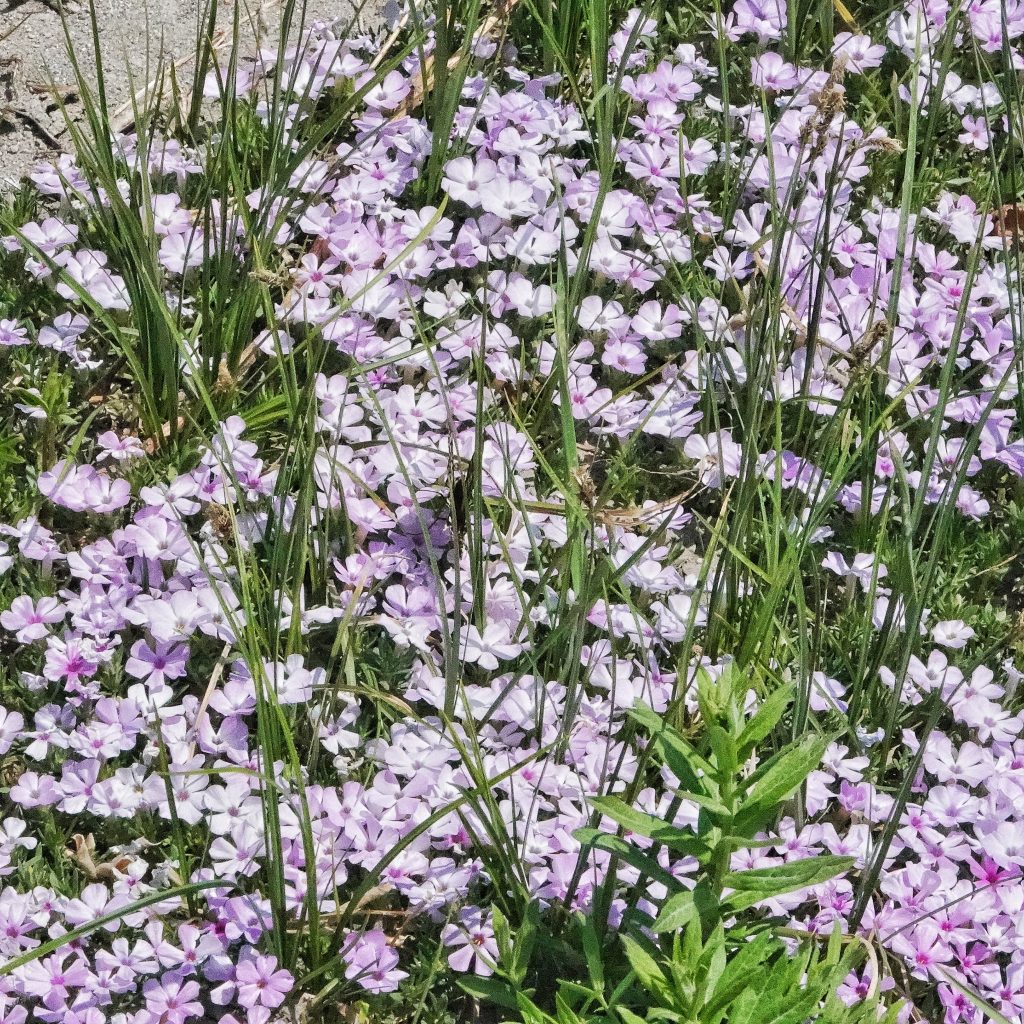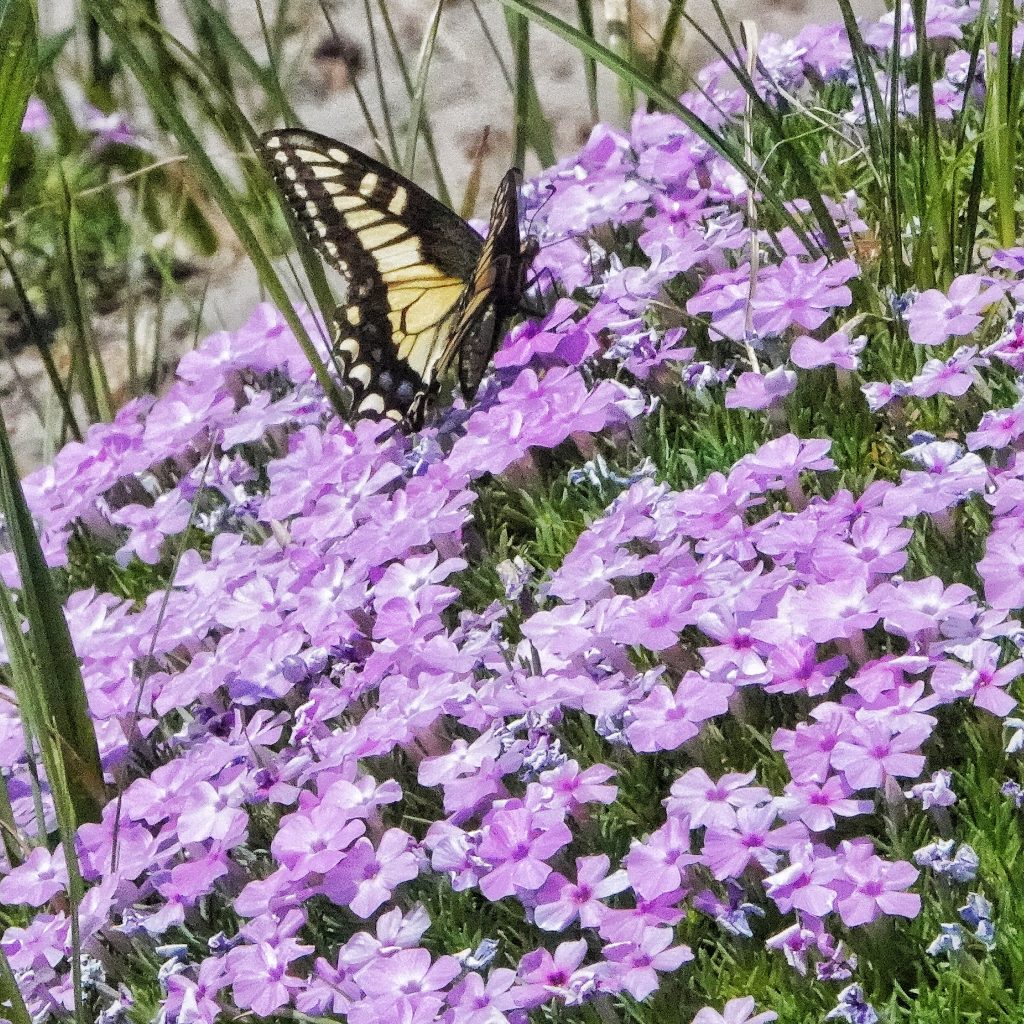
So, I have to be honest here- I’m pretty darn sure these photos show only Phlox diffusa (spreading phlox), but I’m not absolutely positive, because I only sort of keyed one plant, and assumed the rest were the same species. But the genus Phlox is bewildering, with over 20 species, and most of those have narrow leaves and often grow in mounds. Apparently even experts can be confused, because even the authoritative PNW Herbaria site lists many specimens that the 2nd edition of “Flora of the Pacific Northwest” says would not be referable to this species because of their location (although it is probable that much of that is due to taxonomic and nomenclatural changes).
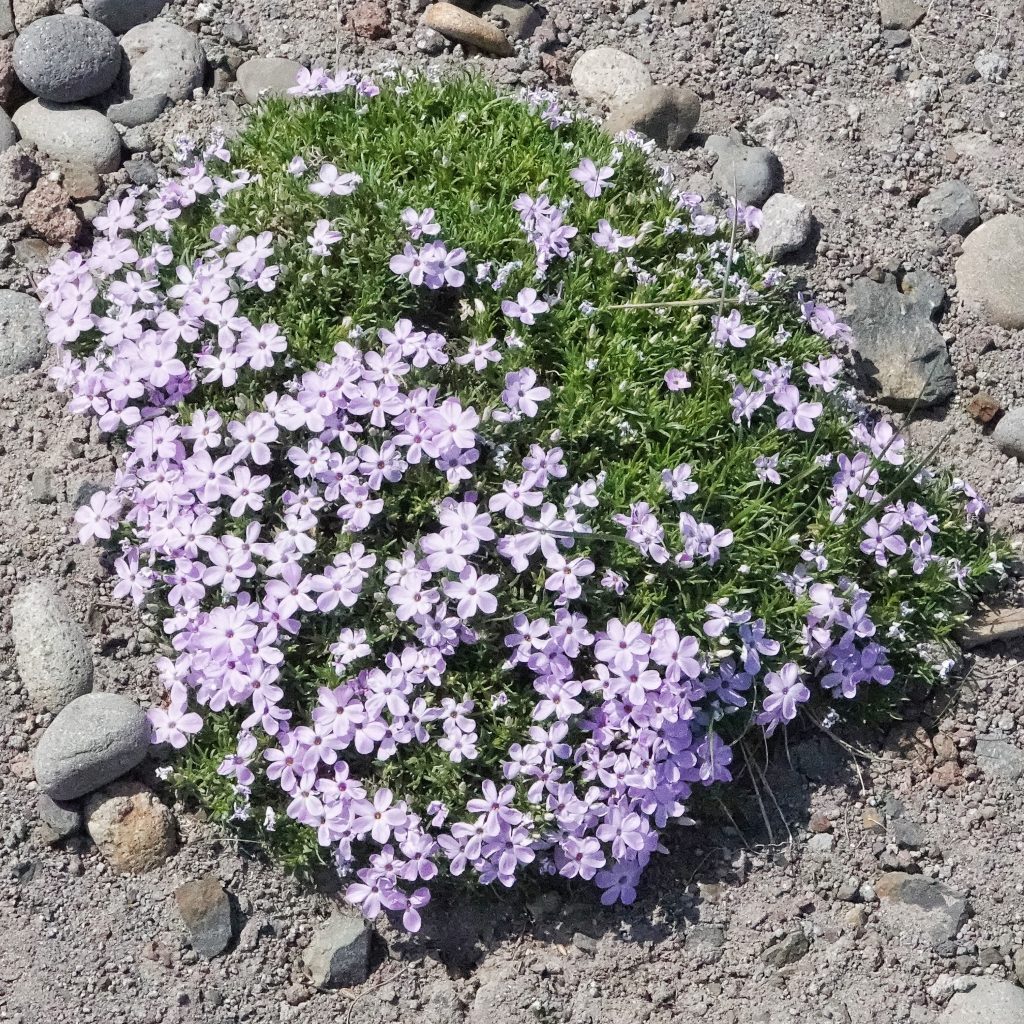
And, outside of this project, I’m completely comfortable just calling most of the cushions of this genus I see ‘phlox’. To me they are spectacularly beautiful whatever they are called, and often have multiple species of flies, bees, wasps, and butterflies visiting their flowers. And the blooms are rather ephemeral because of that traffic, since once they are pollinated the petals start to wither. On my first trip to Mt. Hood this year there was one 1/4 acre or so area that was a riot of phlox flowers and pollinators, but six days later there were virtually no blooms there at all, although other spots were then peaking.
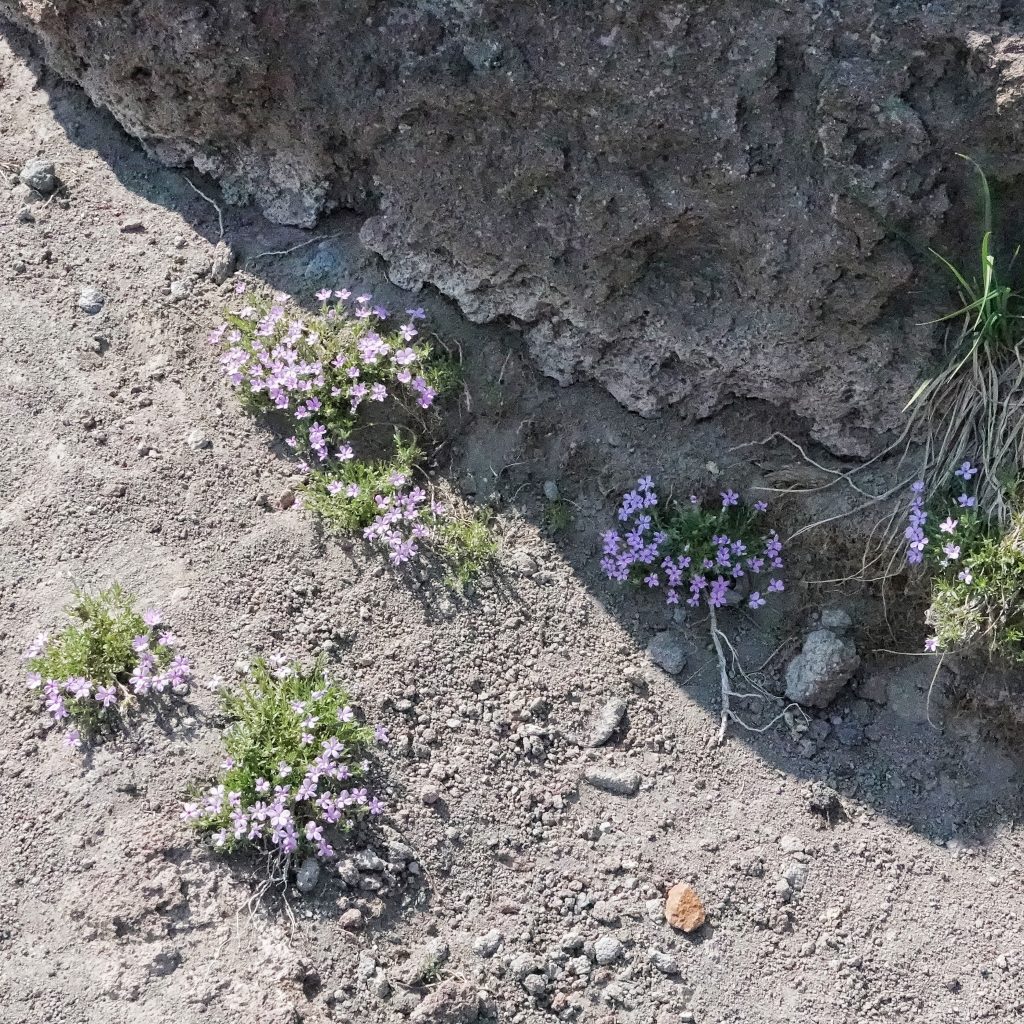
Description– “Mat or open mound with woody base and branches, hairless or covered with thin white hairs, not glandular. Leaves very narrow, sharp on tips, hairy at base. Flowers solitary on leafy branch tips, stemless, lavender, purple, white, pink, or darker rose; petals narrow to round, overlapping, often with dark area near center forming ring.” Phlox diffusa | Spreading Phlox | Wildflowers of the Pacific Northwest
Similar species– For the most part other species of Phlox are hairier, and/or have even narrower leaves, or are mostly erect.
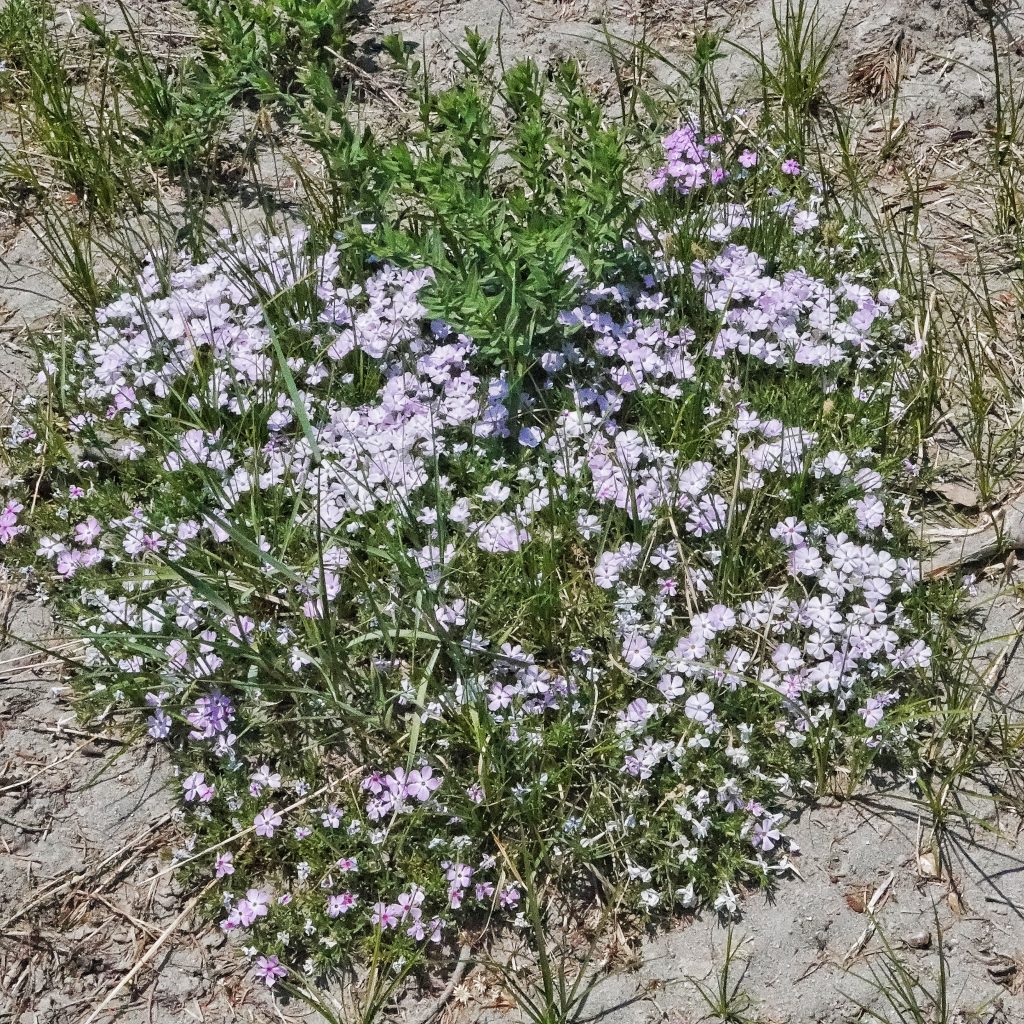
Habitat– Grows in gravelly soils in open, often rocky areas, mid- to high elevations in the mountains, and at lower elevations in the Columbia River Gorge.
Range– Western North America; according to the 2nd edition of “Flora of the Pacific Northwest”, in the PNW it is found in the Coast Range, Olympics, and Cascades, and plants in e Washington and e Oregon, and in the Rockies, are a different species.
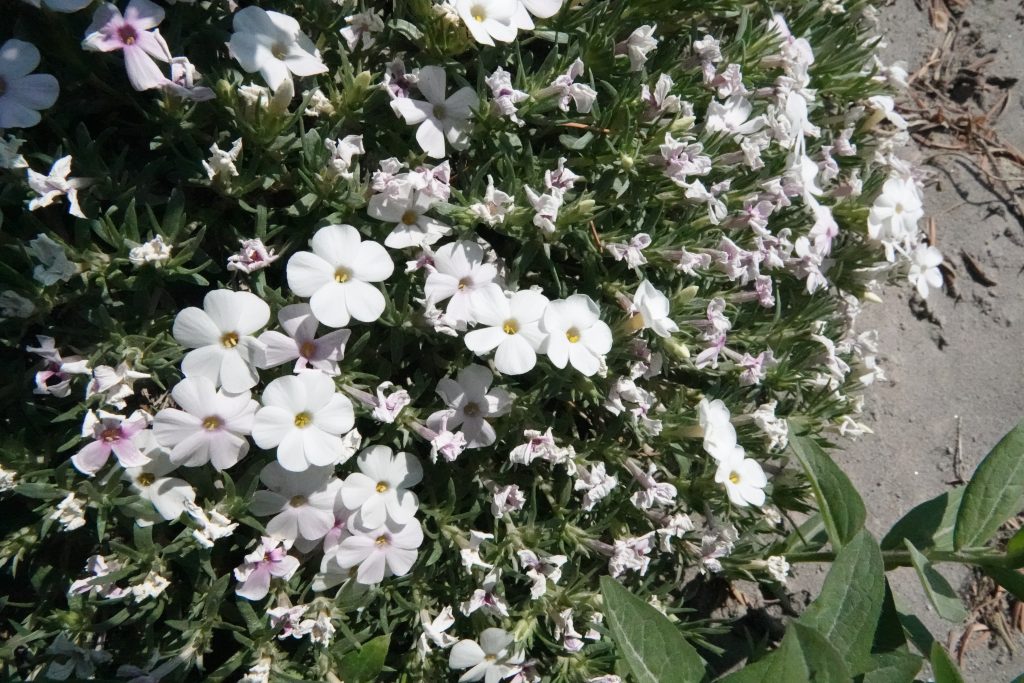
Eaten by– Favored nectar plant for the butterflies Anise Swallowtail, Clodius Parnassian, Variable Checkerspot, Edith’s Checkerspot, and Juba Skipper; important nectar source for early season bumble bees; also pollinated by syrphids and other flies; oddly, though I find records for many insects using other phlox as a larval host, I can find nothing specific to this plant; Gardening sites consider phlox in general to be browsing mammal resistant.
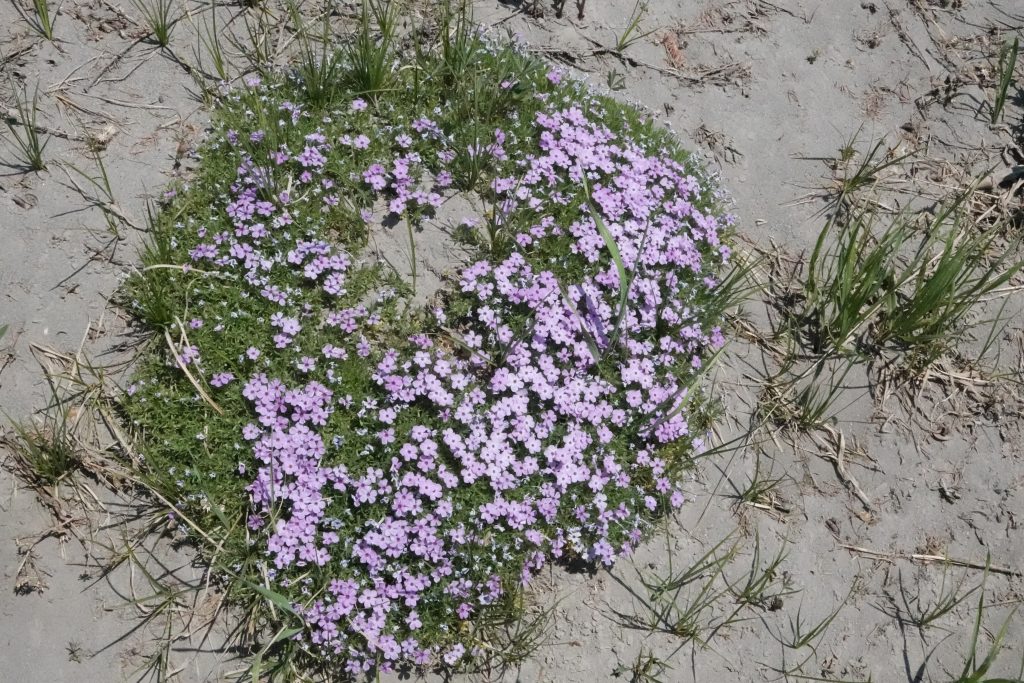
Reproductive timing– Flowers bloom May into August, depending on elevation and latitude.
Ethnobotany– I can find no ethnobotanical, herbalist, or forager information on this plant, although indigenous peoples had quite a few uses for other species of phlox.
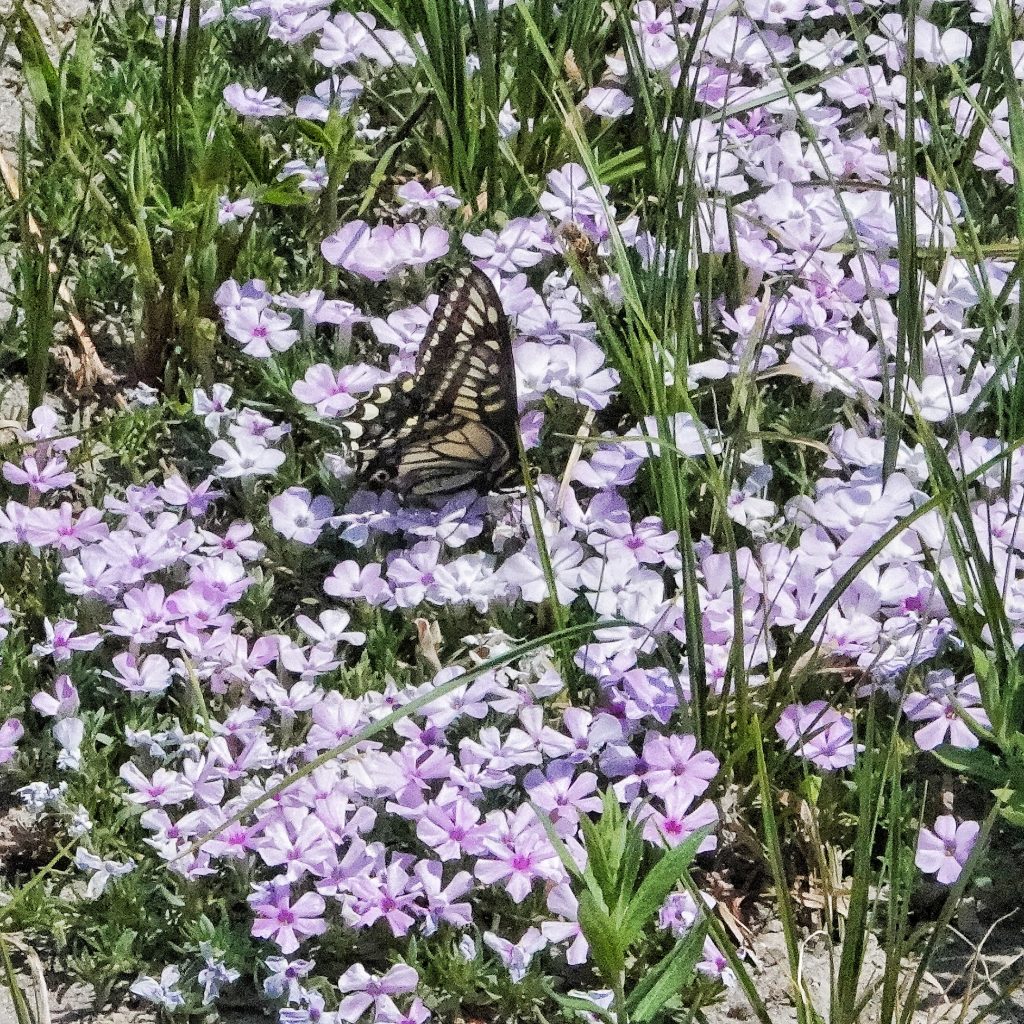
Etymology of names– Phlox is from the Greek word for ‘flame’, and refers to the bright colors of the flowers. The specific epithet diffusa is from the Latin word for spreading, and is certainly apropos for this plant, as well as being the origin of its common name.
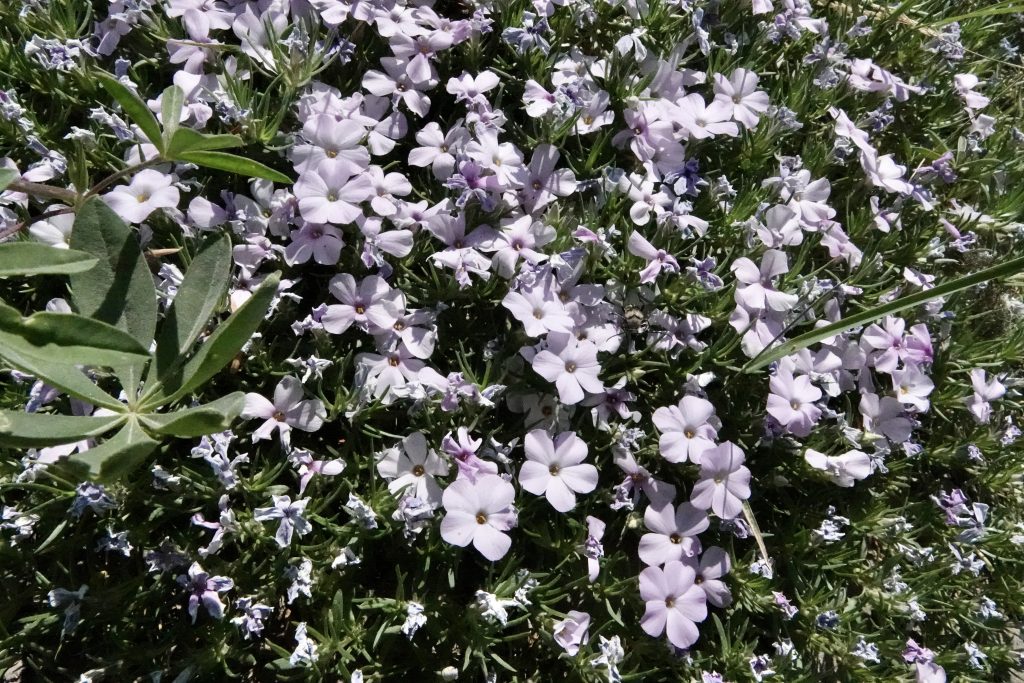
Phlox diffusa | Spreading Phlox | Wildflowers of the Pacific Northwest
Phlox diffusa – Burke Herbarium Image Collection
E-Flora BC: Electronic Atlas of the Flora of BC
https://en.wikipedia.org/wiki/Phlox_diffusa
